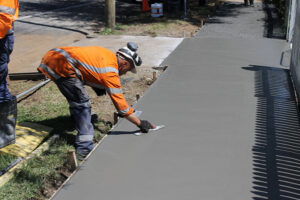Water will always be needed whenever concrete is being made. It’s the moisture from the water that helps it become so durable. However, water isn’t always a good thing because it can compromise the structural integrity of concrete if you aren’t careful. Proper methods for drying will be needed if you want structures to remain sturdy. But why can moisture be such a problem? Find out what moisture does that can do damage to concrete.
Moisture Causes Wider Spaces Between Cement Grains
Whenever there is a greater water-to-cement ratio, the aggregates within cement will have more spacing between them. Moisture lowers the durability and strength that concrete has. When the surface area goes up, more water will be needed to retain its strength. Because of the greater need for water, the water-to-cement ratio increases.
An excess of water can cause larger spaces to form between aggregates, and once the moisture has vaporized, air is left to fill the void. This makes compaction insufficient, which ends up lowering the overall strength.
pH Levels
pH levels within concrete are correlated to the humidity levels around it. When humidity goes on the rise, the temperature of concrete, as well as its pH level, go up. Subsequently, higher pH levels will make it more difficult for adhesive bonds to remain sufficient. Heat causes concrete structures to weaken because, while the drying process is accelerated, the finished product won’t be as well-structured.
When water has carbon dioxide and bicarbonate ions in it, carbonation happens inside the concrete. This is common when salts and acid rain are around. When acidic substances reduce the pH levels of concrete, the strength diminishes because calcium carbonate inside of the aggregates dissolves. This ultimately ends up with the structure crumbling.
Microbial Growth
When you combine heat, absorbent concrete, and high humidity together, it’s much easier for mold and bacteria to develop. Now, it doesn’t have enough organic substances on its own to allow mold to thrive. However, it can absorb substances on which mold can feed, like pollen, salts, and dust.
When mold is able to feed, it lets out acids, and these acids will cause structures to deteriorate. If you don’t want mold to grow, don’t allow dry concrete to stay wet for any longer than one day.
Concrete Visions Will Get The Job Done Right
Concrete Visions has been working with clients for over 25 years. Our G&M Services installers are certified with the industry’s major firestop product manufacturers. As part of our firestop service, we can assess abnormal field conditions and, with the manufacturer’s technical support assistance, provide engineering judgments in a timely fashion to comply with contract specifications. Our Field Mechanics undergo ongoing training, including mandatory monthly safety meetings, weekly Toolbox Talks where safety and equipment information is shred, and trainings on safe work standards and safety best practices.

